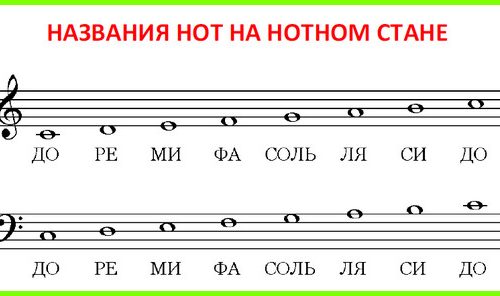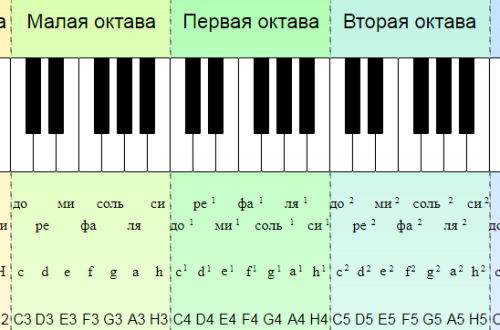
Major scales, intervals, steady steps, chanting (Lesson 3)
At this stage of mastering the Piano Tutorial, we will continue to study major scales, more precisely, the remaining major scales played from white keys. I hope you are already quite familiar with the solfeggio and the piano keyboard, since now you will have to select scales that will be written exactly in the form of notes.
In lesson #2, you learned about the C major, F major, and G major scales. It remains to learn 4 more scales: Re, Mi, La and Si major. In fact, they are all played according to the same scheme already known to you: Tone – Tone – Semitone – Tone – Tone – Tone – Semitone. When written on a musical staff, their differences will be in which black keys (sharps and flats) will be used in a particular scale.
To get started, try, focusing on the scheme 2 Tone – Halftone – 3 Tone – Halftone and on your own ear, pick up scales.
D major

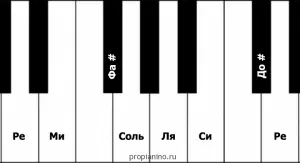
We are major

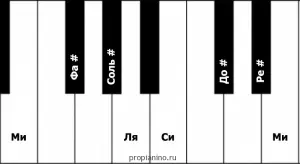
A major

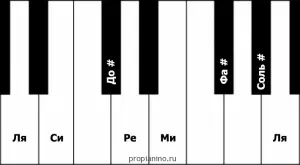
B major


You just have to learn the scales and learn how to play them quickly and rhythmically. Practice, practice and more practice!
Intervals – this is the distance between two notes, without their knowledge it will be impossible to improvise later.
I remind you that half a tone (0,5 tone) is a movement of one key, a tone (1) is a movement of 2.
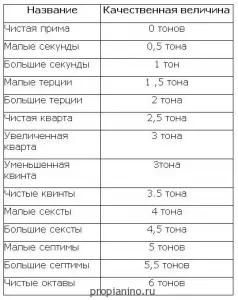
This is how the intervals will look on the musical staff (from prima to octave)

In music schools, when playing intervals, students are asked to identify them by ear. Of course, this is difficult to implement at home, but you can play intervals and try to memorize their sound on your own. Musical dictations and singing are also practiced in music schools, which are necessary for the development of hearing. The teacher plays certain notes, and the students first need to understand what he played – a scale, stable steps or chanting (later there will be many more options), after that the students need to determine the number of notes in a measure and arrange the barlines, at the very end the task is given transpose (that is, from the C major scale, rewrite the entire dictation in B major, for example).
Stable steps needed to build chords. 1-3-5 played notes – the so-called stable. In the C major scale, these are the notes Do – Mi – Sol, in the D major scale: D – Fa # – La.
Singing – everything is simple here, you just need to sing the notes that are adjacent to the one that you were given. The chanting is from above and below. In the top note Do, everything will look like this: Re-Si-Do; bottom: C-Re-Do. With the note Re, the singing from above will be like this: Mi-Do # (you don’t need to sing the word sharp) – Re; bottom: Do (#) – Mi – Re.
Unfortunately, this is one of those cases where the help of a teacher would be useful, but if you do not have such an opportunity, then let you at least have a general knowledge of such useful things. Pay special attention to stable steps and intervals, then you will not be able to do without them. Don’t forget to play the scales and you’ll be on your way to success!
Well, if you are a diligent student and have mastered the lesson materials well (after many hours of exercises), you are welcome to the next, fourth, lesson called Recording and playing musical text.



